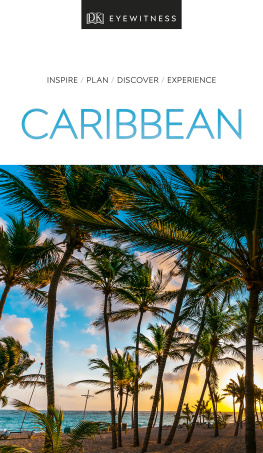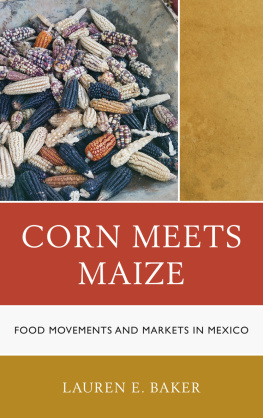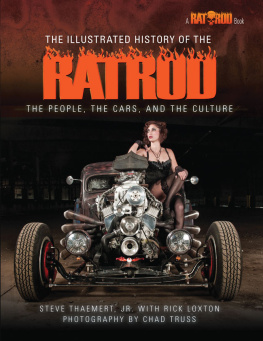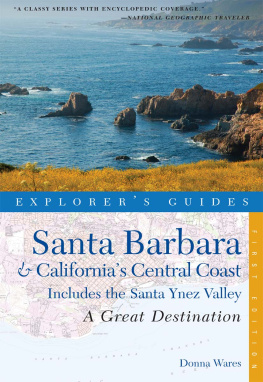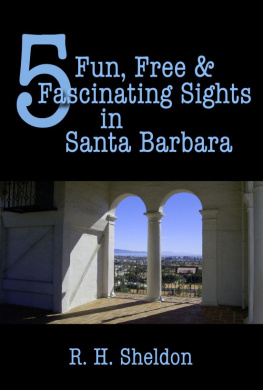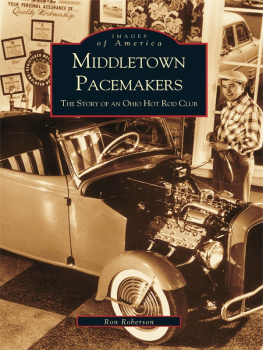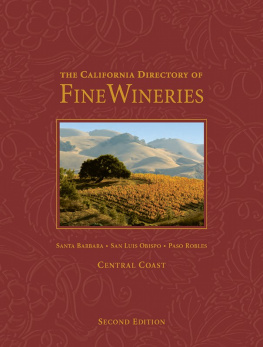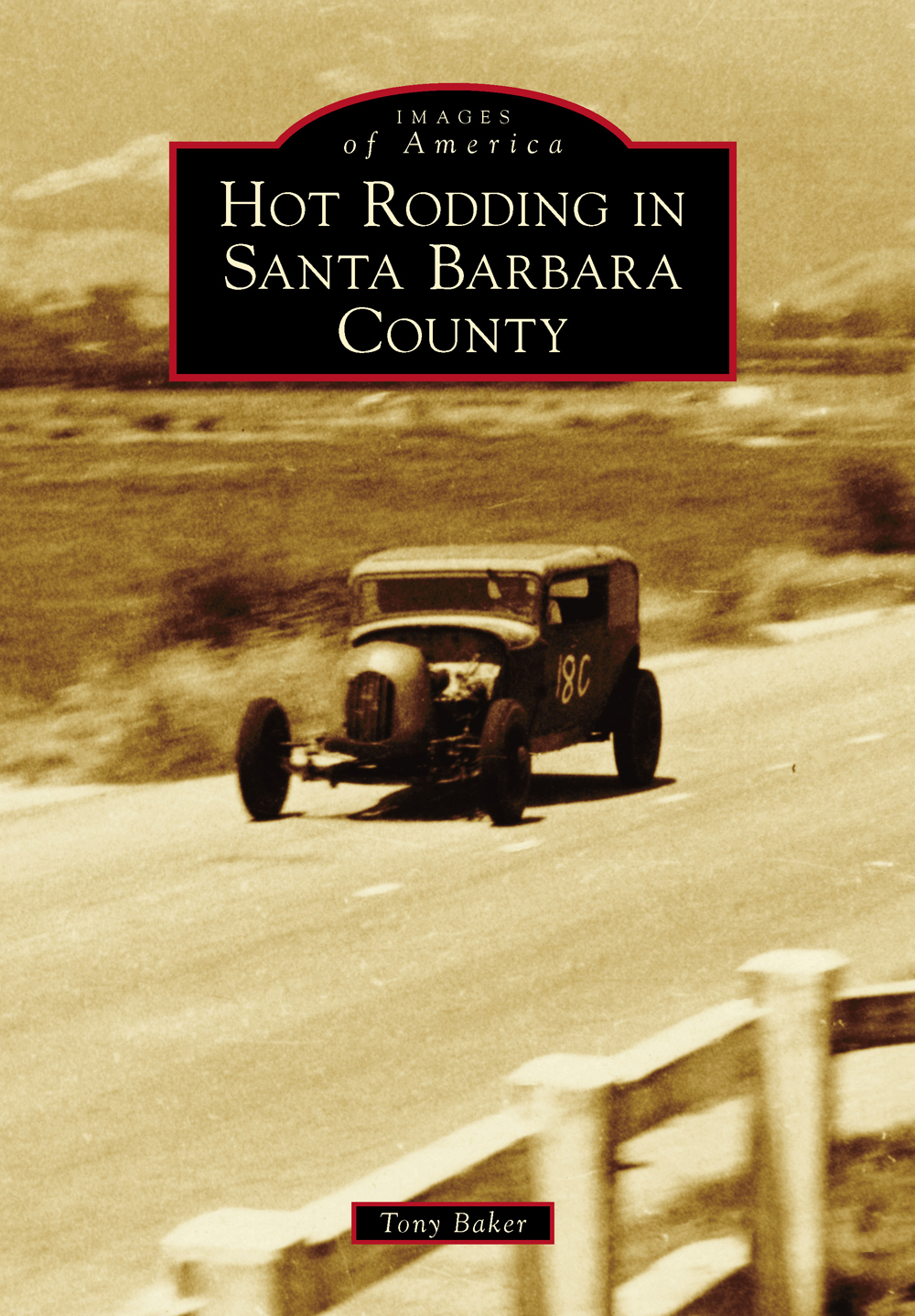
IMAGES
of America
HOT RODDING IN
SANTA BARBARA
COUNTY

A pair of unidentified Santa Barbara hot-rodders tears around the lemon packinghouse on Salsipuedes Street sometime in 1941. This scene evokes a different time in Santa Barbara, when there were still large unpaved areas in places that are now unrecognizably developed. The packinghouse is still there, although altered and no longer used for lemons. It can still be seen today as one passes by on Highway 101. (Courtesy of Jack Chard.)
ON THE COVER: A Ford Model A hot rod crosses the finish line at Goleta Drag Strip in 1948. The chopped 1931 Tudor has had the rear windows blanked out, and a sprint cartype radiator shell has been added. In the background is the wetlands area known as the Goleta Slough. (Courtesy of Lee Hammock.)
IMAGES
of America
HOT RODDING IN
SANTA BARBARA
COUNTY
Tony Baker

Copyright 2014 by Tony Baker
ISBN 978-1-4671-3218-3
Ebook ISBN 9781439647462
Published by Arcadia Publishing
Charleston, South Carolina
Library of Congress Control Number: 2014932582
For all general information, please contact Arcadia Publishing:
Telephone 843-853-2070
Fax 843-853-0044
E-mail
For customer service and orders:
Toll-Free 1-888-313-2665
Visit us on the Internet at www.arcadiapublishing.com
To Willis M. Bill Baldwin
CONTENTS
ACKNOWLEDGMENTS
I would like to thank all the members of the Central Coast hot rod community who granted me access to their photograph collections and, more importantly, to their memories. Special thanks go to veteran race car driver, hot rodder, and true gentleman Lee Hammock for patiently sitting through the many hours of my relentless questioning. Thanks also go to Santa Maria Drag Strip founder Jerry Gaskill, my friends Jack Chard and Frank Viera, Don Lanning, Barry Atsatt, Fred Dannenfelzer, Ruben Martinez, Don Edwards, Hunter Self, Betty Roach, Jerry Williams, Walt Williams, Ambrose Little, Jesse Torres, and Willard Partch. For the chapter on the Baldwin Specials, I would like to thank Stephen Payne for generously providing a wealth of research material and valuable input, Stu Hanssen for his contributions to the Baldwin story and helping to get the whole project started, and Bill and Vicki Baldwin. Thanks also go to Mark Mendenhall for use of the archive at the Mendenhall Museum and for his time and help. For their invaluable work in the production of this book, I would like to thank Desiree Gonzales, text and layout editor, and Ryan Rush, image editor. For use of their excellent facilities, I would like to thank my close friends Adam Randall and Tiffanie Wright of the Squashed Grapes Wine Bar and Jazz House. For his continued support, thanks again go to my old friend Harry Mishkin. And thanks also go to my son, Thomas. Last but not least, many thanks go to Jeff Ruetsche and Elizabeth Bray at Arcadia Publishing for getting me started, and to Jared Nelson, Suzanne Lynch, and the rest of the staff at Arcadia. I have worked hard to make this pictorial history as accurate as possible, but please forgive the inevitable errors that will occur. I hope you enjoy reading it as much as I enjoyed putting it together.
INTRODUCTION
Most of the towns that sit alongside US Highway 101 in Santa Barbara County have made some type of contribution to the history of motor sports and hot rodding. From Carpinteria and its oval dirt track to Santa Marias famous drag strip, almost any kind of automotive racing could be found in the region.
Probably the earliest hot rod action was jalopy racing. Based on prewar sprint car and dirt-track racing, jalopy racing took advantage of the abundance of used Fords and other older cars that became available as the postwar era progressed. Cheap, expendable, and easy to hop-up, the jalopies led to a fast, reckless, no-holds-barred type of racing, which produced the thrills and chills that the crowds of the late 1940s loved.
The biggest and most famous track on the coast was the Thunderbowl, located on a high bluff over the ocean south of Carpinteria, California. The quarter-mile, dirt, oval track was founded in 1946 by veteran sprint car racer J.F Slaybaugh and hosted such celebrity drivers as Parnelli Jones and Troy Rutman. Originally started as a midget-car track, it became dominated by jalopy racing around 1948, when it began drawing larger crowds. The Carpinteria Thunderbowl became a major attraction in the region as car culture began taking over America.
Like its neighbor to the south, Ventura County, Santa Barbara County had many of the same factors that led to a very active hot rod scene. Teenage car nuts, returned veterans who had been involved in the prewar hot rod scene, and oil-field mechanics were all present and began banding together. The earliest postwar group of local speed enthusiasts included Bob Joehnck and Lee Hammock. Like all the early California hot-rodders, the Santa Barbara boys had to choose between illegal street drags or four-hour trips out to El Mirage Dry Lake for its racing activities.
After the end of World War II, the federal government began closing down many of the military facilities dotting Californias Central Coast. Two of these, Marine Corps Air Station Santa Barbara (located at the former municipal airport in Goleta) and Santa Maria Army Air Field, would be turned over to Santa Barbara County for civilian use. The two bases would eventually become municipal airports, although the large military airfields were more than the local communities required at the time. Along with well-constructed concrete runways, complete water and power systems, and various buildings, there were lots of unused access roads, hardstands, and taxiways that were perfect for other uses, like driving fastreally fast, with no traffic or stop signs to get in the way.
This was soon noticed by Bob Joehnck and others in the Santa Barbara area. They had wanted a place to race that was both legal and nearby, and Goleta looked like the perfect location. In the summer of 1948, Bob approached the friendly airport manager, a Mr. Swain, who quickly approved. Insurance was acquired through Lloyds of London, and the Santa Barbara Acceleration Association (SBAA) was formed and in business. A long, straight perimeter road north of the runwaynow known as Firestone Avenuewas chosen as the track. The starting line was near Cass Place, and the finish was where the road crossed Carneros Creek, roughly a quarter of a mile. An unused lifeguard tower was procured from the beach for use as a timing stand, and this was connected to the finish line by telephone equipment that the Marines had abandoned when they left the air base. It cost $1 to get in and watch; there were no grandstands, and refreshments were provided by a catering truck. And so was born the first quarter-mile drag strip in the country. The SBAA also laid out a rough track around an abandoned air base warehouse north of the starting line across Hollister Avenue for when drivers got tired of racing in a straight line.
Shortly after this, the newly formed California Sports Car Club (CSCC) moved into the northeast corner of the airport for some European-car road racing. Imported exotics like the Talbot-Lago, MG TC, and Jaguar XK 120 were raced there, as were a few locally designed and built specials. One of the specialsbuilt by Montecito resident Willis Baldwin, driven by Englishman Philip Payne, and made up of off-the-shelf Ford speed parts on a modified 1932 framegave the imports a run for their money when it took first place at the CSCC time trials on August 7, 1949. This rod, or more properly, sport rod, went on to a successful racing career in Southern California and later in England, where it created quite a controversy.
Next page




